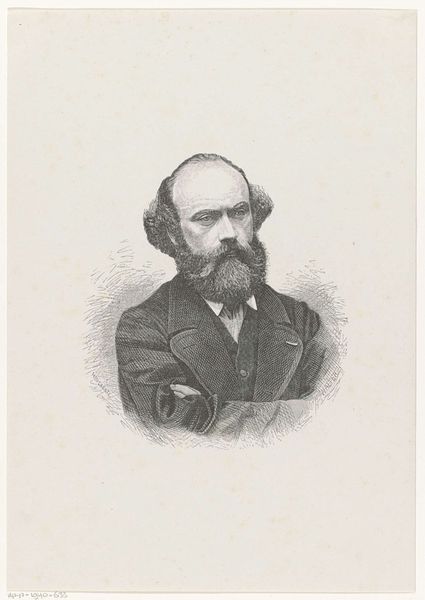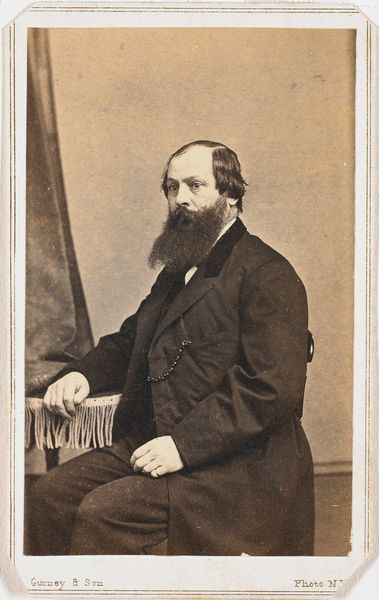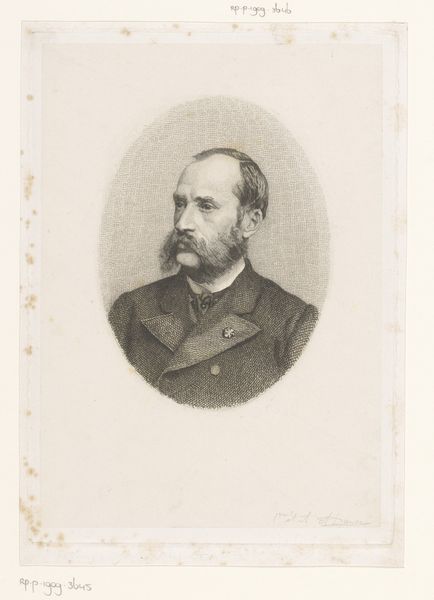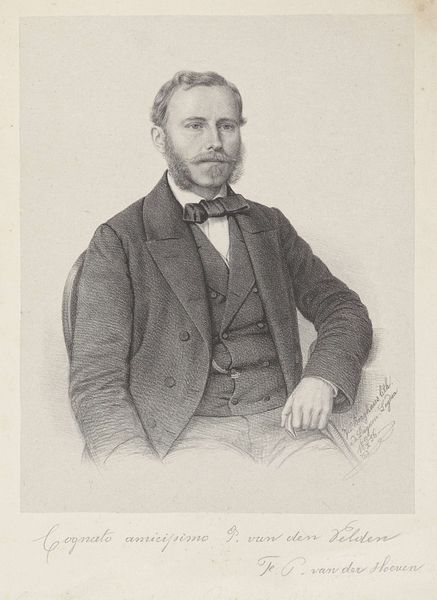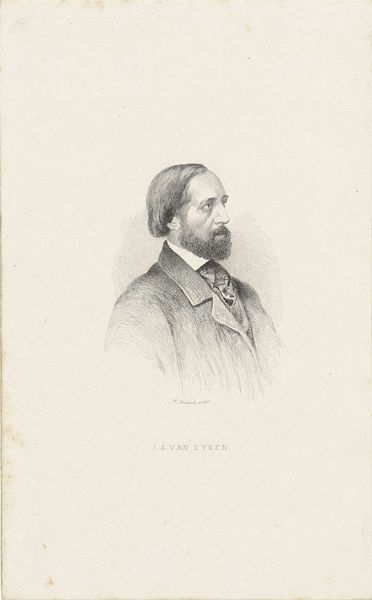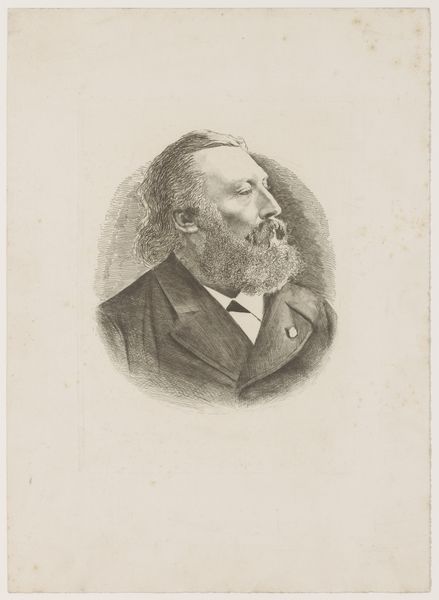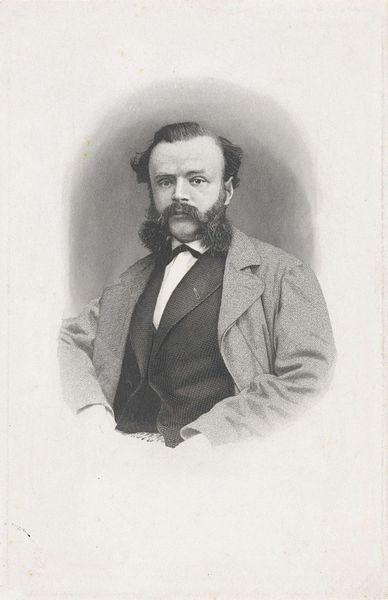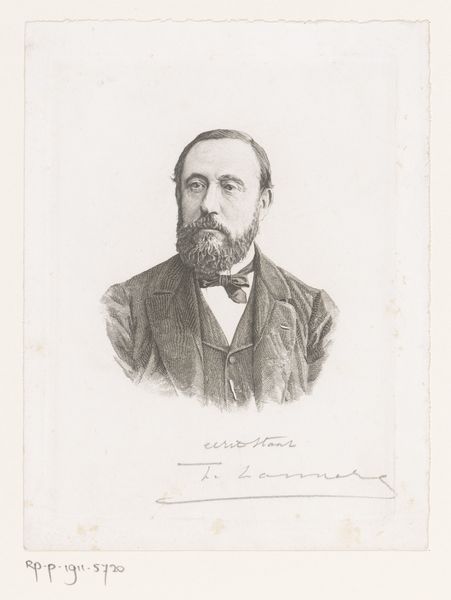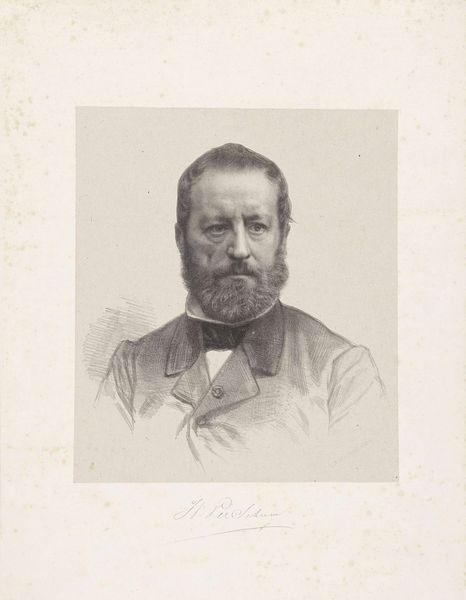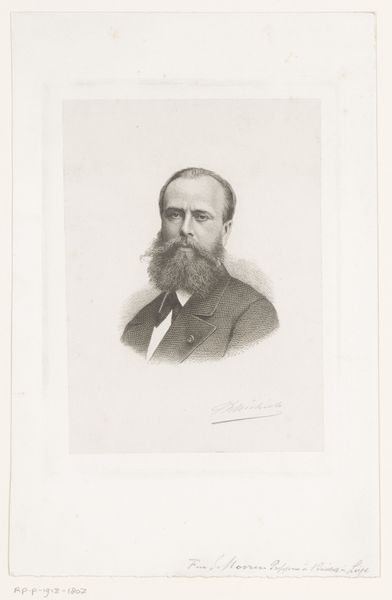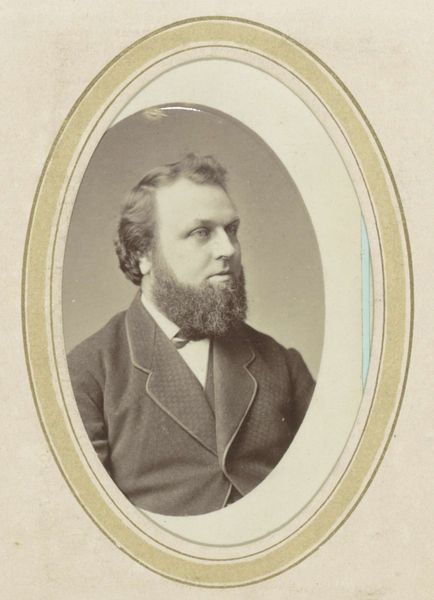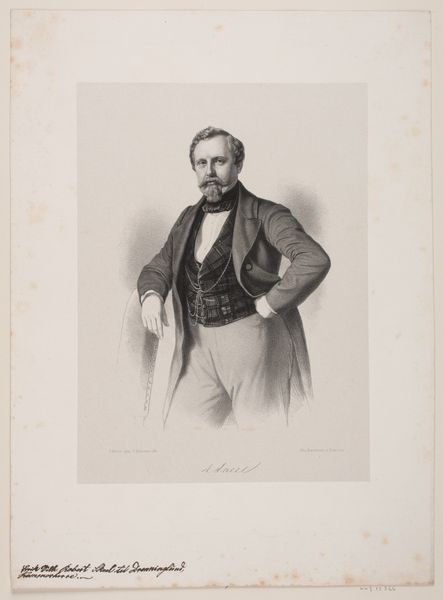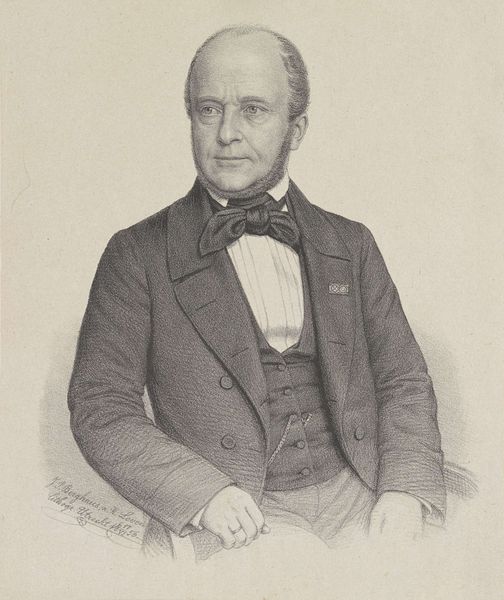
drawing, pencil
#
portrait
#
pencil drawn
#
drawing
#
light pencil work
#
pencil sketch
#
pencil drawing
#
pencil
#
portrait drawing
#
pencil work
#
academic-art
#
realism
Dimensions: height 102 mm, width 76 mm
Copyright: Rijks Museum: Open Domain
Editor: Here we have an anonymous portrait of Willem III, King of the Netherlands, rendered in pencil sometime between 1849 and 1890s. It has this very… proper feel, almost like it's trying to embody authority. What do you see in this piece? Curator: This portrait, beyond its realistic depiction, is a window into the construction of power and masculinity during a period of significant social upheaval. We can see the sitter posed formally, carefully arranged, but it's not just about representation; it's about projecting a certain image. How do you think the medium, a pencil drawing, influences that perception compared to, say, a painted portrait? Editor: That’s interesting. Perhaps the pencil makes it feel a bit more accessible, less overtly opulent than an oil painting. Does this accessibility have political implications? Curator: Absolutely. During Willem III’s reign, the Netherlands witnessed rising social movements and calls for greater democracy. Think about how a less imposing image might have served to soften the image of the monarchy. It’s not just a portrait of a king, but a carefully crafted statement during a period of negotiation and shifts in societal roles. Who do you think this image was for? Editor: Probably the rising middle class, to make the king feel more… relatable, I guess? It makes you wonder how deliberate that was. Curator: Exactly. And consider how the act of portraiture itself, regardless of the medium, becomes a tool for solidifying and communicating identity, power, and even ideology within specific socio-political contexts. What did you take away from this? Editor: It really makes you think about what’s *behind* the image. Not just what it looks like. Curator: Indeed, and how it functions in the bigger picture of historical representation.
Comments
No comments
Be the first to comment and join the conversation on the ultimate creative platform.
